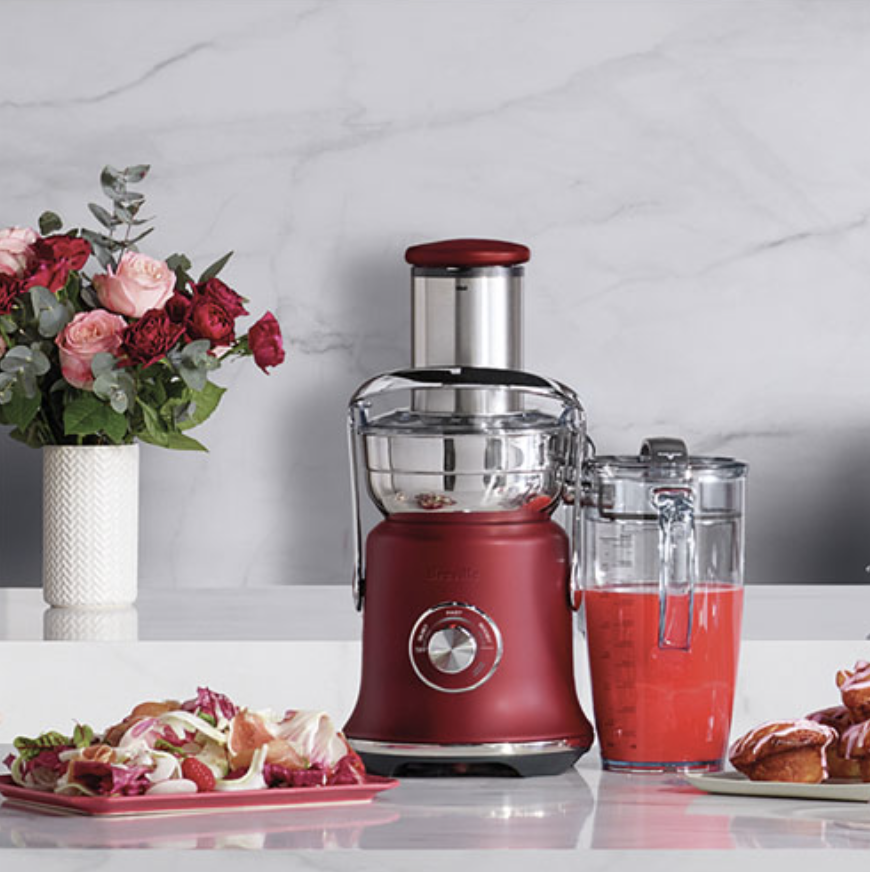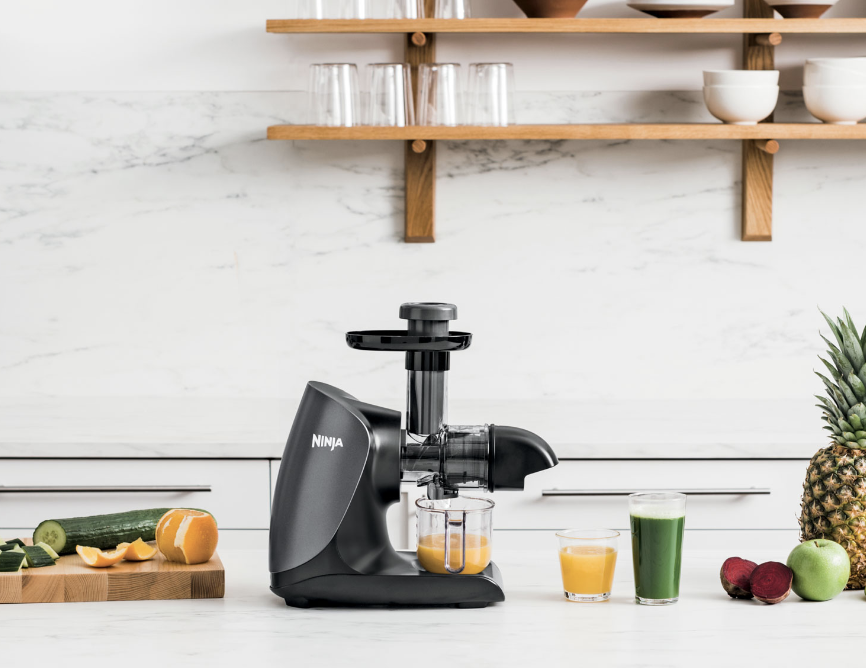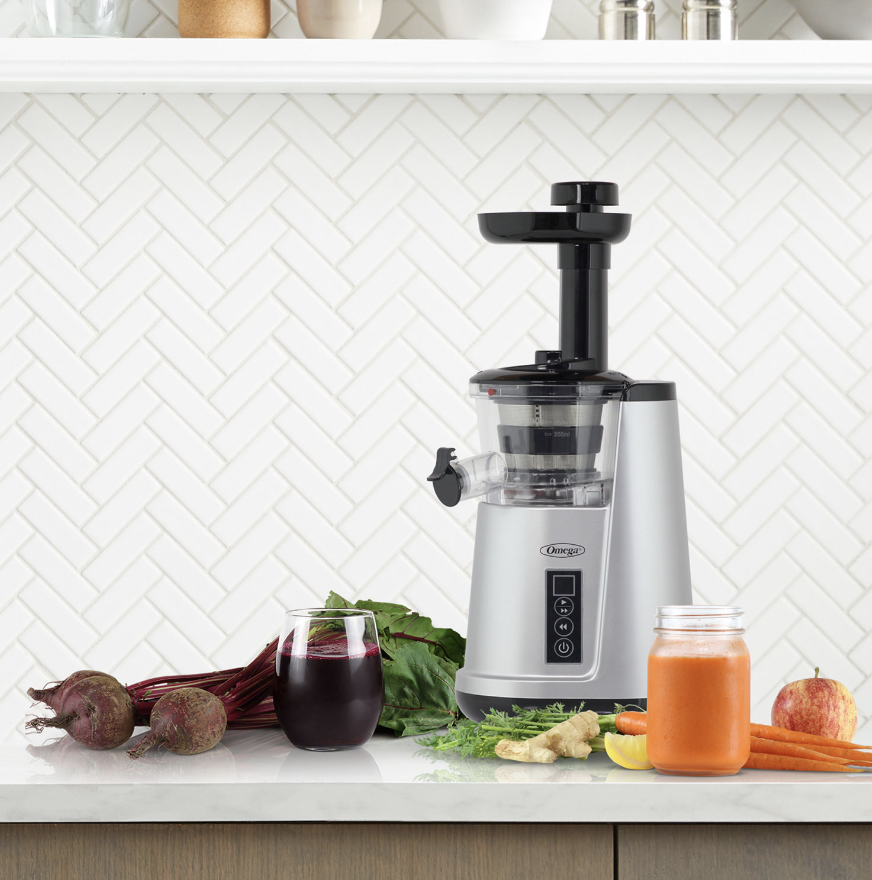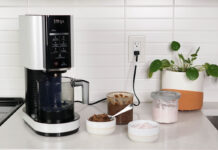
So you’ve finally decided to take the juicer plunge. Whether you are fully into the juice cleanse trend or simply looking for a healthier drink alternative to fruit juices with added sugars (and a great way to use up leftover fruits and vegetables!) there are lots of good reasons to add fresh juice to your meal plans. If you’ve ever purchased a glass from a local restaurant or juice shop, you know they aren’t cheap. So why not make your own at home?
Not only does using a juicer help give you all of those important vitamins and nutrients from fruits and vegetables quickly and efficiently (and in a neat “to-go” package), but it can be a much easier way to ensure your picky little eaters are getting their daily required servings as well.
Before you take the plunge, have a read through our detailed blenders and juicers buying guide to learn everything you need to know. Once you are ready to invest, it’s important to recognize the two main types of juicers: centrifugal and masticating. You’ll want to understand the difference to ensure you select the right one for you.
What are centrifugal juicers?

If you’re super busy, and just want to extract some goodness from your fruits and vegetables at home to drink on the run, centrifugal juicers might be the best way to go.
As the most common type of juicer, centrifugal juicers, as the name implies, use centrifugal force to quickly spin the food as it’s pushed inside. Sharp teeth shred the items, and work to separate the juice from the remaining pulp, skin, and seeds. They usually offer high power or at least 850 watts, some models with variable speeds as well that can range from 6,500 up to 13,000 rpm. The excess pulp typically goes into an extra-large pulp container (you can use this in everything from soups to muffins, or simply compost it). Centrifugal juicers are also relatively easy to clean, with many parts that are dishwasher-safe.
Pros with centrifugal juicers
They are quick: Centrifugal juicers offer a quick way to get what you want in a drinkable format. They are the most convenient, efficient, and quick way to get delicious cups of nutritious, freshly squeezed juice.
Sometimes have larger chutes: They can take fruits and vegetables whole, cutting down on your prep time. Some models have an extra-large mouth intake chute to accept many larger fruits and veggies.
Cons with centrifugal juicers
May not break down plant fibres well: The downside is that they might not break down the plant fibres as well as masticating juicers. That said, you can always save the reserves and pulp and use it for cooking or baking later, as mentioned.
Oxidation: Oxidation occurs due to the high speed at which they move, causing some enzymes to break down, and thus lost from the final product.
What are masticating juicers?

On the other hand, masticating juicers, which tend to be a bit more expensive, use a cold press process whereby you push fruits and vegetables, or even leafy greens and herbs and spices, into a tube and they are squeezed much more slowly to ensure you get every last drop of goodness out of each piece. This means you can retain more of the nutrients, and the juice can reportedly last longer in the refrigerator; potentially up to 72 hours. If you plan on making big batches of juice to grab and go in the mornings, it might be worthwhile to invest the extra money in a masticating juicer.
Pros with masticating juicers
More nutrients: As mentioned, because of the slower squeezing process, using a masticating juicer will retain more of the nutrients from the fruits and vegetables you use. This is why masticating juicers tend to be favoured by those whose top priority is nutrition.
Juice lasts longer: It will depend on the process, machine, and your storage. But generally, juice from a masticating juicer can last longer in the refrigerator. So, you can make bigger batches on a Sunday and drink from it for the next couple days, giving the juice a quick stir each time.
Less oxidation: Because of the slower process, the amount of oxidation is reduced as well.
Can do double duty: Many masticating juicers can do double duty as food processors, chopping up harder items like meat and nuts. Some even have the ability to convert frozen fruits into a sweet treat of sorbet.
Cons with masticating juicers
Only accepts small pieces: You can typically only feed small, cut pieces of fruit and vegetables versus entire ones.
Process is slower: The slower process can be a blessing and a curse. While you retain nutrients, it will also take you longer to make a glass of freshly squeezed juice versus when using a centrifugal juicer.
More expensive: Masticating juicers can often be more expensive than centrifugal, so expect to invest a bit more.
Which should you choose?

Now that you fully understand the difference between these two main types of juicers, which should you choose? This really comes down to space, time, priorities, and your process. See these pros and cons, then revisit the buying guide to help you narrow down the options to the perfect juicer for you and your family.
Check out a wide selection of both centrifugal and masticating juicers at Best Buy Online.




Don Brenneman, your juice combinations sound delicious! And congrats on losing 20 lbs. That is amazing! What you describe sounds a bit like the Paleo Diet, which eliminates wheats, grains, seeds (so unfortunately no sunflower seeds), or dairy. Just fruits, vegetables, meats, eggs, etc. (There might be some cheats in Paleo-inspired diets.) I actually did try that for 6-weeks while I was doing a boot camp, and felt fantastic. If you have the discipline to do it, which it sounds like you do, that is fantastic. BTW, my husband has recently realized he has an allergy to gluten (only just figured out after about 5 years of feeling awful that gluten may be the culprit) so I’ve been experimenting with eliminating gluten from my diet as well, or at least cutting it down. It’s much easier than making two meals every night! lol Keep up the great work, and thanks for reading.
Why remove the pulp at all? I use a Vitamix to make my juice. It’s a powerful blender that has enough power that I could make flour from wheat, except that I don’t eat gluten. I take one liter of water and enough veggies to make 2.5 liters of juice, which I sometimes have to thin, but using my juice, I’ve lost almost twenty pounds in the last two months. I eat mostly grass-fed meat with this juice and nothing more, except on the once or twice a week time when my body craves a slice of gluten-free toast. Each batch of my juice is one carrot or beet (or other colored veggies), one apple or other fruit, 1/3 cup raw sunflower seeds, and a tonne of raw greens–kale and lettuce.
As far as I can tell, this is a completely sustainable diet, there’s no chance of losing muscle mass or protein starvation, and I lose no fiber or other parts of the plant. I get all the nutrients including a range of phytonutrients. It’s easy, it requires no portion control or will power, it just requires motoring along according to plan.
Comments are closed.